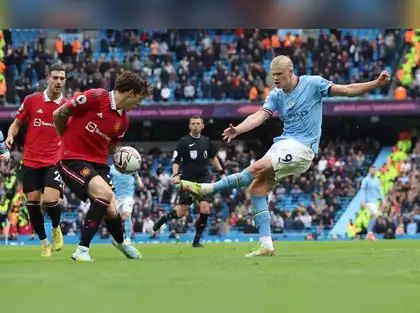In the recent Manchester derby, statistics showed that Man United won up to 20 second-ball duels, almost double Man City’s 11. Yet paradoxically, these numbers did not translate into efficiency or dominance on the pitch.

In reality, most of United’s second-ball recoveries came from wide areas, while the central zones — the true hub of creativity and tempo control — were virtually deserted. This left United paralyzed against Pep Guardiola’s well-drilled mid-block.
With the two central midfielders unable to escape pressure or progress the ball effectively, United had no means of disrupting City’s compact defensive structure. As a result, possession was repeatedly funneled to the flanks, where Dorgu and Mazraoui became the primary outlets.

However, relying too heavily on the wing-backs for breakthroughs is far from a sustainable strategy. United have Bruno Fernandes, Mbeumo, and Amad — players capable of invention and attacking threat higher up the pitch — yet instead of utilizing them, the team gambled on wide deliveries. The issue is not simply that Dorgu or Mazraoui “cross poorly,” but rather that the attacking system itself is far too one-dimensional and rigid.
Manager Ruben Amorim’s tactical concept may not be inherently flawed, but the execution leaves United stuck in predictable patterns. When the central channels are frozen and the bulk of the play is pushed wide, no amount of second-ball wins can truly unlock City’s defense.
A lack of balance and creativity in United’s attacking play remains the key weakness that must be addressed if the club hopes to close the gap on their city rivals in future derbies.
Leave a Reply